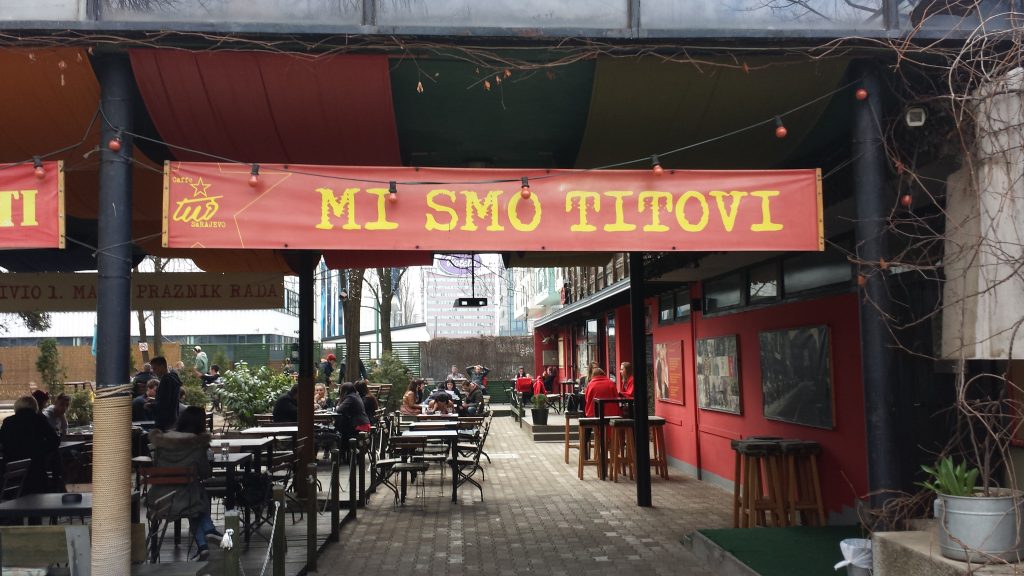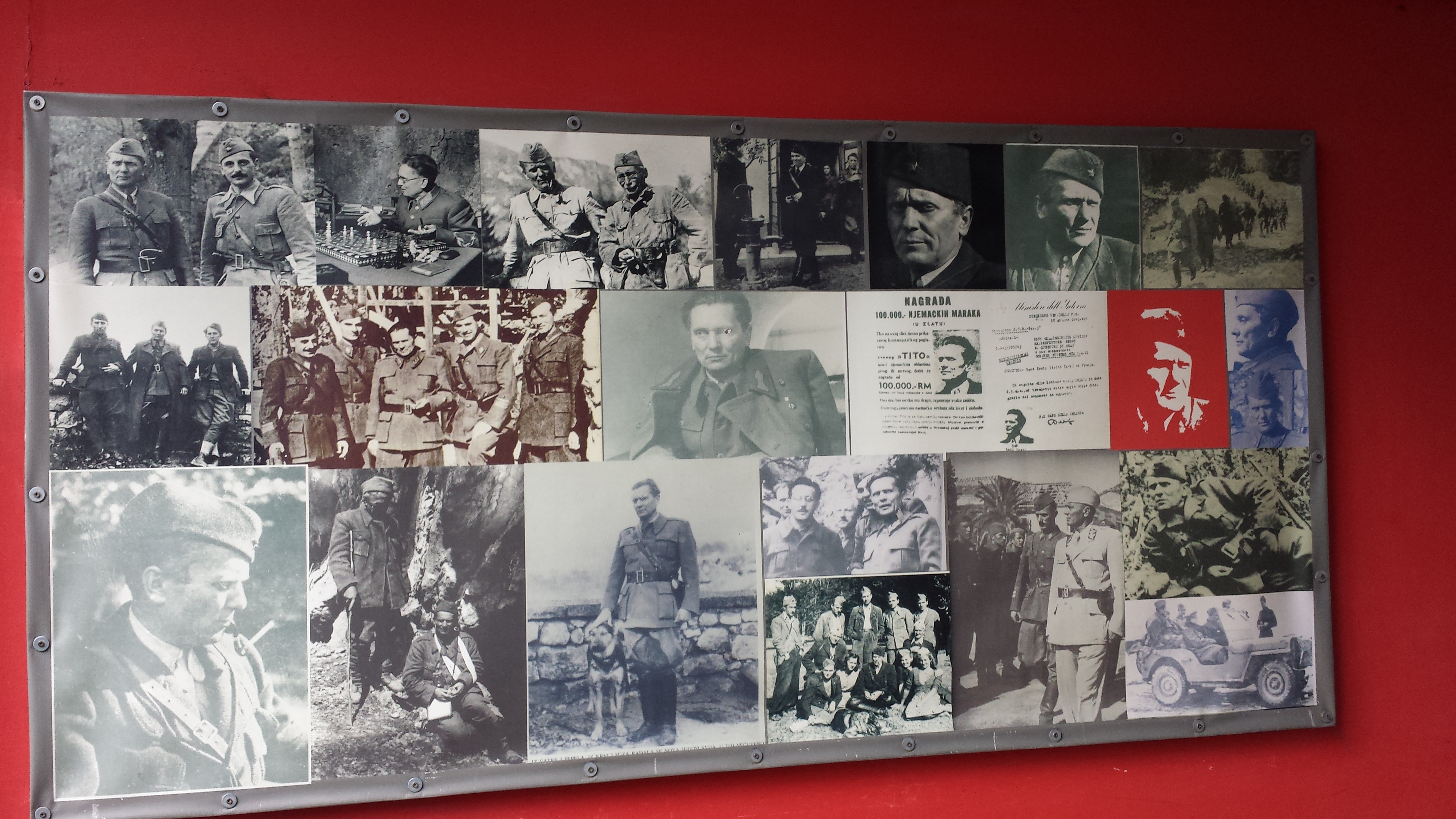
]Marion Pineau continues her exploration of Yugo-nostalgia, exploring its emergence in multiple forms across the former Yugoslavia.
In the northern province of Vojvodina in Serbia, one man has set up Yugoland, a place dedicated to Tito and Yugoslavia — a replica of sorts that serves as a memorial and pays homage to the former republic in an effort to re-create the “old, happy days.” To Blasko Gabric, the owner and founder of Yugoland, Yugoslavia meant “peace.” He states, “We had peace. We had brotherhood. They said we had artificial brotherhood and unity. I say, ‘I like artificial brotherhood and unity hundred times more than the war between brothers!’ No Bible can describe a more beautiful heaven than the one we had in our Yugoslavia. We had the most wonderful country in the world.”
In Sarajevo, the capital of Bosnia-Herzegovina, Caffe Tito is a nice place to relax and meet young people. The place exhibits a communist-era bronze bust of Tito and ancient typewriters and telephones. A large red star is painted on the floor; framed articles about Tito are hung on the walls; and the clock is stopped at five past past three — the time of Tito’s death. “In a way, we are all Yugo-nostalgic. We all feel like Yugoslavians, at least the people I know do,” says 23-year-old Nikolina, “and we know that we have the same roots. Only the name of the language and the name of the country has changed.” Her friend, Branko, 21, agrees, “When you ask people here if they would like to return to the time of Yugoslavia, 99% will say yes.”
The personality cult of Tito is also evidenced by the statues and streets that have been named after the former leader. In 2004, when the authorities in Sarajevo proposed to rename a section on the main avenue of Marsala Tita after the late Bosniak leader Alija Izetbegovic, it provoked a public outcry, forcing the municipal administration to keep the avenue’s current name. Hundreds of people gather at Tito’s statue in Sarajevo every year during a ceremony commemorating the anniversary of his death. Thousands more from throughout the former Yugoslavia gather each year in Tito’s birthplace of Kumrovec in Croatia and at his grave in Belgrade. Every 25 May, many former Yugoslavs continue to celebrate the Relay of Youth (Stafeta Mladosti), an annual relay race, which has commemorated Josip Broz Tito’s birthday since 1944. Such is the centrality of Tito’s cult of personality.

Even on the internet, you can find plenty of Yugo-nostalgic websites. The “.yu“ internet domain name remained quite popular on the Web until 2010. One of the most humorous is certainly Tito’s Home page, created by two young Slovenians. Here you can read, “Josip Broz Tito: [born in] Kumrovec [on] 7 May 1892 – [dead in] Ljubljana [on] 4 May 1980 – [on] internet [since] 22 July 1994.” The entire website is written in first person and you can send Tito an e-mail at [email protected] (he will most certainly respond). You can find archives of rare pictures, communist songs, and Tito’s biography, along with his entire bibliography and filmography.
Also on the internet is the Leksikon of Yu Mitologije (Lexicon of Yugoslav Mythology), an ongoing internet-based project, which is accompanied by a hardcopy edition. The massive tome of nearly 500 pages, edited by a team of Serbians and Croatians, amasses various artifacts of Yugoslav culture and everyday life between 1943 and 1991. The authors argue that popular culture was a completely unexplored and unacknowledged aspect of life in Yugoslavia. Instead of convening a panel of experts, the project was designed to involve all citizens who wished to be involved, believing that they were all equally qualified to identify and comment on Yugoslav popular culture.

According to Iva Pauker from the University of Melbourne’s School of Social and Political Science, Yugo-nostalgia and its cultural manifestations could provide an opportunity for reconciliation in the region: “While reconciliation certainly cannot be achieved in the arena of popular culture alone, it might be wise to broaden the focus of reconciliation research to also include popular culture as both a tool for reconciliation and as a barometer of its progress.”
Indeed, rational or not, justified or not, Yugo-nostalgia is present throughout the former Yugoslavia, and understanding why allows us to understand a lot about the region and its people. Tito’s Socialist Federal Republic of Yugoslavia certainly had its flaws, but it was more than just a communist dictatorship. It was a real way of life.






